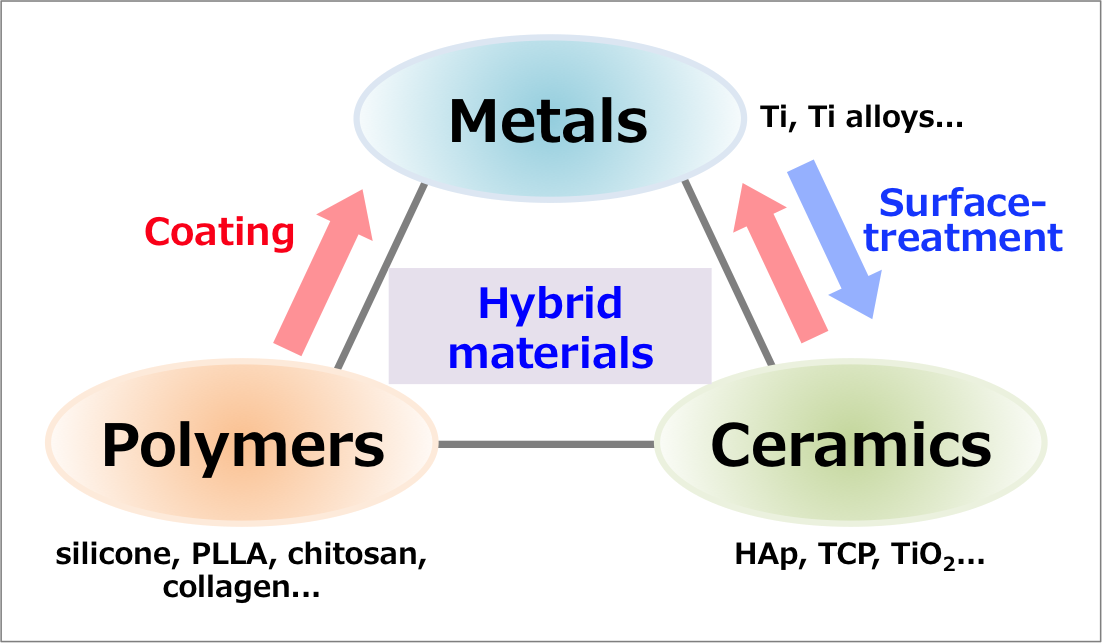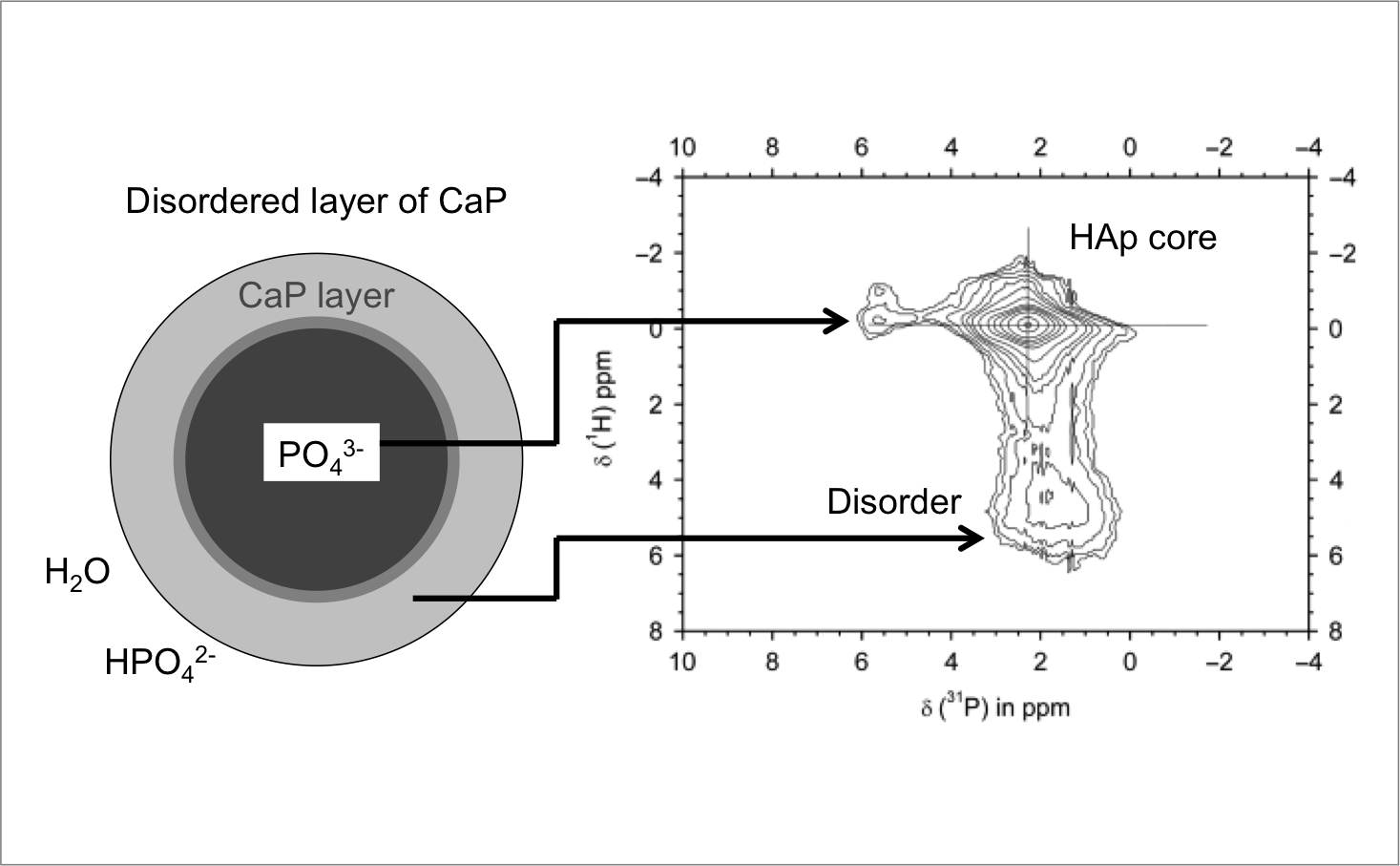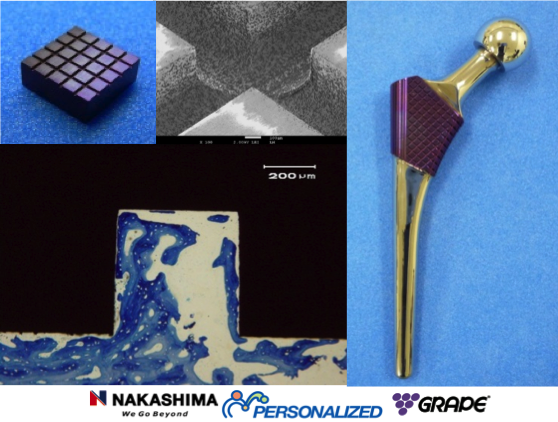About Bimaterials Laboratory
For Better Biomaterials...

With the aim of creating novel "biomaterials" with excellent biocompatibility and highest functionality, as well as cultivating "Experts at material science", the group research works within the fields of biomedical materials and tissue engineering.
Current research topics include but are not restricted to design and synthesis of inorganic materials, organic-inorganic hybrids, and composites among glass, ceramics, polymers, and metals for biomedical applications. The group also focuses on characterization and optimization of their atomics and microstructures to provide highest functionality.
Current Research
Highly-oriented hydroxyapatite crystals

Fully developed mature dental enamel is a highly orga- nized structure of enamel prisms that consist of bundles of nanorod-like hydroxyapatite (HAp) crystals arranged roughly parallel to each other. A nanometer-scale rod array of HAp having preferred orientation to the c-axis was successfully prepared simply by soaking calcium-containing silicate glass substrates in phosphoric salt solution.
1) S. Hayakawa, Y. Li, K. Tsuru, A. Osaka, E. Fujii, K. Kawabata, "Preparation of Nanometer-scale Rod Array of Hydroxyapatite Crystal", Acta Biomaterialia, 5[6], 2152-2160 (2009).
Ion-substituted hydroxyapatite

Lattice structure and its disorder of hydroxyapatite (HAp) influence biodegradability, and amorphous (disordered) surface layer of HAp can adsorb physiological active substance such as cellular growth factor. The oxoacid ion-induced HAp is synthesized, and relation between local structure around oxoacid ion in HAp and characteristics of HAp is investigated.
1) S. Hayakawa, T. Kanaya, K. Tsuru, Y. Shirosaki, A. Osaka, E. Fujii, K. Kawabata, G. Gasqueres, C. Bonhomme, F. Babonneau, C. Jaeger, H.J. Kleebe, "Heterogeneous structure and in vitro degradation behavior of wet-chemically derived nanocrystalline silicon-containing hydroxyapatite particles", Acta Biomaterialia, 9[1], 4856-4867 (2013). 2) S. Barheine, S. Hayakawa, A. Osaka, C. Jaeger, "Surface, Interface and Bulk Structure of Borate Containing Apatitic Biomaterials", Chemistry of Materials, 21[14], 3102-3109 (2009).
Surface treatment of titanium for enhanced bioactibity

GRAPE® Technology (GRoove and APatitE)
Our research group and Nakashima Medical Co., Ltd. developed the extremely simple technique for providing the spontaneous apatite-forming ability to titanium by both spatial design and thermal oxidation, denoted as “GRAPE technology”. Pure titanium with machined micro-groove of less than 800 μm in depth and 1000 μm in width and thermally oxidized at 400°C in air induced apatite deposition in the internal space of micro-grooves during exposure to simulated body fluid (SBF).
1) K. Uetsuki, S. Nakai, Y. Shirosaki, S. Hayakawa, A. Osaka, "Nucleation and growth of apatite on an anatase layer irradiated with UV light under different environmental conditions", Journal of Biomedical Materials Research, 101A[3], 712-719 (2013). 2) A. Sugino, C. Ohtsuki, K. Tsuru, S. Hayakawa, T. Nakano, Y. Okazaki, A. Osaka, "Effect of spatial design and thermal oxidation on apatite formation on Ti-15Zr-4Ta-4Nb alloy", Acta Biomaterialia, 5, 298-304 (2009).
3) A. Sugino, K. Tsuru, S. Hayakawa, K. Kikuta, G. Kawachi, A. Osaka, C. Ohtsuki, "Induced deposition of bone-like hydroxyapatite on thermally oxidized titanium substrates using a spatial gap in a solution that mimics a body fluid", Journal of the Ceramic Society of Japan, 117, 515-520 (2009).
4) J-M. Wu, S. Hayakawa, K. Tsuru, A. Osaka, "Low-temperature Preparation of Anatase and Rutile Layers on Titanium Substrates and Their Ability To Induce in Vitro Apatite Deposition", J. Am. Ceram. Soc., 87[9], 1635-1642 (2004).
5) X-X. Wang, W. Yan, S. Hayakawa, K. Tsuru, A. Osaka, "Apatite deposition on thermally and anodically oxidized titanium surfaces in a simulated body fluid", Biomaterials, 24, 4631-4637 (2003).
Organic-inorganic hybrid scaffolds for tissue engineering

Chitosan is biodegradable, biocompatible, non-antigenic and non-toxic material, and Si(IV) stimulates bone ingrowth, hence organic-inorganic hybrids consisting of chitosan and organosiloxanes will be candidates for biomedical applications and tissue engineering. We try to develop flexible, osteoconductive, and biodegradable organic-inorganic hybrid materials.
1) Yuki Shirosaki, “Preparation of organic-inorganic hybrids with silicate network for the medical applications”, Journal of the Ceramic Society of Japan, 120 [12], 555-559 (2012).
2) Y. Shirosaki, K. Tsuru, H. Moribayashi, S. Hayakawa, Y. Nakamura, I.R. Gibson, A. Osaka, “Preparation of osteocompatible Si(IV)-enriched chitosan-silicate hybrids”, Journal of the Ceramic Society of Japan, 118[11], 989-992 (2010).
3) Y. Shirosaki, K. Tsuru, S. Hayakawa, A. Osaka, M.A. Lopes, J.D. Santos, M.A. Costa, M.H. Fernandes, “Physical, chemical and in vitro biological profile of chitosan hybrid membrane as a function of organosiloxane concentration”, Acta Biomaterialia, 5[1], 346-355 (2009).
Collaborations
| Centre national de la recherche scientifique (CNRS), Dr. Florence Babonneau | Solid-state NMR spectroscopic analysis of apatite ceramics |
| Federal Institute for Materials Research and Testing (BAM), | Analysis of Interaction between nano-apatite and protein |
| University of Birmingham, Dr. Artemis Stamboulis | Fabrication of PVA-fiber mats by electro-spinning technique |
| Universidade do Porto, Prof. Maria H. Fernandes | Organic-inorganic hybrid materials for tissue engineering |
| The University of Aberdeen, Prof. Iain Gibson | Organic-inorganic hybrid materials for tissue engineering |
| Okayama University Graduate School of Medicine, Dentistry and Pharmaceutical Sciences, | Surface modification of titanium for enhanced bioactibity |
| Frontier Research Academy for Young Researchers, Kyushu Institute of Technology, Assoc. Prof. Yuki SHIROSAKI | Organic-inorganic hybrid materials for tissue engineering |
